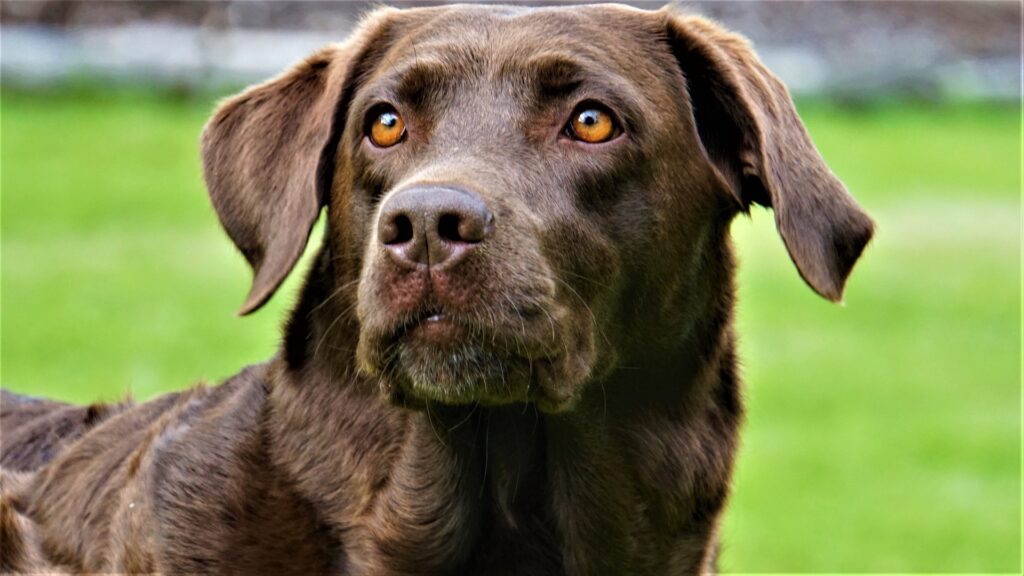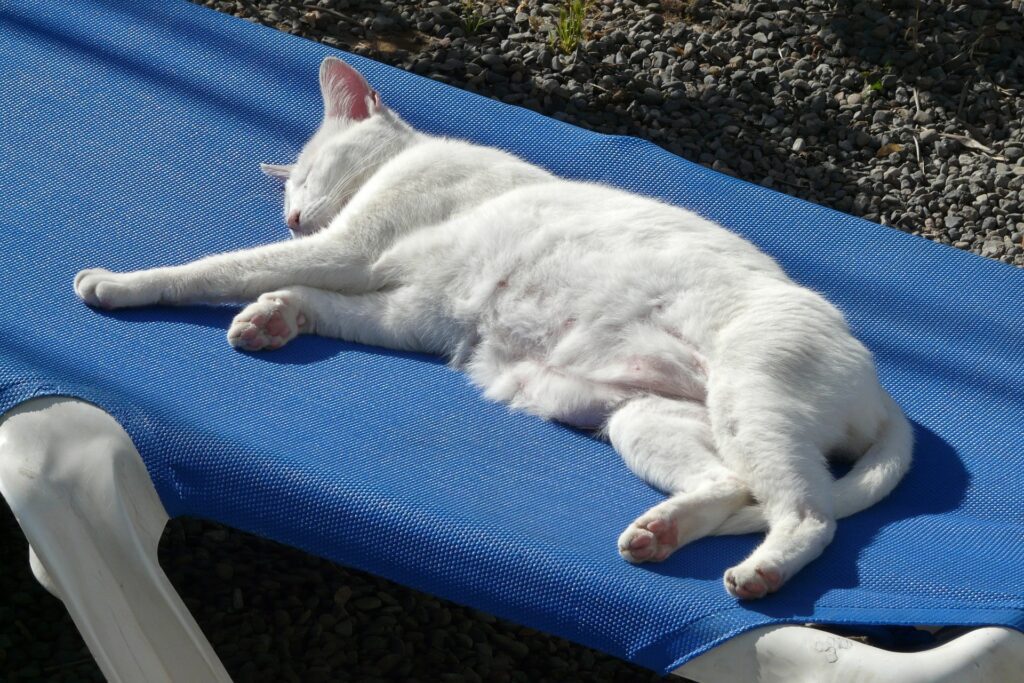Duke, a gorgeous 8-year-old Lab, was initially diagnosed with an ACL tear. Yet when I saw him, several things didn’t make sense. We repeated X-rays, which confirmed my suspicion.
Imagine the difficult conversation that followed: “Ms. Smith, Duke does not have a torn ACL, he most likely has bone cancer.”
This was not a pleasant phone call for anybody involved…
The next logical question is: “Why?”
Why does my poor dog (or cat) have cancer?
After all: “I’ve fed the best food”; “we got yearly vaccines”; “I know both parents”; “my breeder is reputable”; “(s)he gets everything (s)he wants.”
Asking why your pet gets cancer is a fair question, yet the answer is very difficult.
Most often, my answer is that we simply don’t know. It’s bad luck. It’s partially genetic (after all, bone cancer mostly happens in large-breed dogs). And some breeds are known to be more prone to cancer.
That said, there are some known causes of cancer in pets. Let’s go over 10 of them.
1. FEMALE DOGS AND HORMONES
Female hormones increase the risk of mammary cancer. Despite the hype and the haters, it’s a scientific fact that spaying female dogs before their first heat significantly reduces the risk of mammary (breast) cancer. We generally consider that the first heat happens around 6 months of age.
To give you an idea of the risks:
. Dogs spayed before their first heat cycle have a 0.5% chance of getting mammary cancer.
. Dogs spayed after 1 single heat cycle have an 8% chance of getting mammary cancer.
. Dogs spayed after 2 heat cycles have a 25% chance of getting mammary cancer.
After 2 heat cycles, there is no more protection.
In addition, spaying eliminates the risk of ovarian and uterine cancer, as well as several benign conditions (ovarian cysts, etc.).

2. FEMALE CATS AND HORMONES
We use the same cut-off – about 6 months of age – for the first heat cycle.
Cats spayed before their first heat are 7 times less likely to get mammary tumors than cats spayed after six months of age.
That’s an incredibly compelling reason to spay a cat.
But the odds are even worse in cats: 99% of mammary tumors are cancerous in cats.
This is a big difference with dogs, in which the risk of mammary cancer vs. a benign tumor is about 50-50.
3. MALE PETS AND HORMONES
It’s pretty simple: no testicles, no testicular cancer.
So it’s logical to understand that neutering a male pet completely eliminates that risk.
Now, it’s not a common disease, but there are other benefits of neutering, starting with annoying or unacceptable behaviors.
I also would like to clarify a myth. We used to think that neutering decreases the risk of prostate cancer, when in fact it does not lower that risk. That said, prostate cancer is thankfully very rare in dogs.
4. TOBACCO SMOKE
Smoking can affect pets. Dogs who live in a household with a smoker have a risk of nasal (nose) cancer or lung cancer that is twice as high as dogs in non-smoking households.
5. CATS AND SUNLIGHT
We know that white cats who like to warm up in the sun have a higher risk of skin cancer (squamous cell carcinoma) of the nose and ears.
Surgery is possible, but it’s pretty disfiguring, especially when it affects the nose.

6. DOGS and ASBESTOS
Mesothelioma is a rare cancer of the chest. Whenever we diagnose it in a dog, it puts us on high alert because a possible cause is asbestos.
So we have to warn the pet owner to look into the possibility that there is asbestos in their house! In that case, we say that the dog acts like a “sentinel.”
7. DOGS AND HERBICIDES
Some herbicides have chemicals that can cause cancer in dogs: glyphosate (Roundup), dichlorophenoxyacetic acid (aka 2,4-dichlorophenoxyacetic acid, aka 2,4-D), sethoxydim etc.
Types of cancers that have been diagnosed include lymphoma (aka lymphosarcoma) and bladder cancer. Scottish terriers are commonly mentioned as having a higher risk.
8. BONE CANCER IN DOGS
As mentioned above, bone cancer most commonly happens in large and giant dog breeds.
So there is a genetic component. It is also believed that repetitive trauma can cause bone cancer.
9. VIRUSES
Certain types of viruses can cause cancer, including:
. Papillomavirus in dogs
. Feline Leukemia Virus (FeLV)
. Feline Immunodeficiency Virus (FIV).
10. OVERWEIGHT AND OBESITY
Having an overweight or obese pet increases their risk of cancer.
Bonus 11. GENETICS
We know that some breeds have a higher risk of certain types of cancers, which shows that genes and genetics are involved. Here are a few well-known examples:
. Boxers and Mast Cell Tumors (MCT)
. Golden retrievers and lymphoma
. Rotties, Great Danes, German shepherds, Labs, Goldens and osteosarcoma (bone cancer)
. Golden retrievers and hemangiosarcoma 9e.g. in the spleen)
. Flat Coat retrievers and Bernese mountain dogs and histiocytic sarcoma
As you can see, some cancers can be totally eliminated (e.g. by spaying or neutering), and some cannot. That’s the challenge of falling in love with a breed.
Labs and Goldens are wonderful dogs, but they are known to have a higher risk of cancer.
So what is a pet lover to do?
That is again a fair but tough question to answer…
Should you never drive a car because there is a risk of having an accident?
Should you never light a candle because there is a risk of fire?
Should you never fall in love because you risk a heartache?
All you can do is avoid known risks from the list above, such as smoking, some lawn products and overweight.
You can also take easy precautions such as spaying or neutering your pet.
You can feed quality food, exercise your pet and follow your vet’s recommendations.
It’s no guarantee that your pet won’t get cancer, but at least you can rest assured that you’ll have done everything in your power to reduce the risk.
And if cancer does happen in your pet, surgery and/or chemo can hopefully help in a significant way.
Lastly, get pet insurance, especially for pets at a higher risk for cancer. This way, should something serious happen to your pet, your decision to treat will not be based on finances alone.
If you would like to learn how we can help your pet with safe surgery and anesthesia, please contact us through www.LRVSS.com
Never miss a blog by subscribing here: www.LRVSS.com/blog
Phil Zeltzman, DVM, DACVS, CVJ, Fear Free Certified
